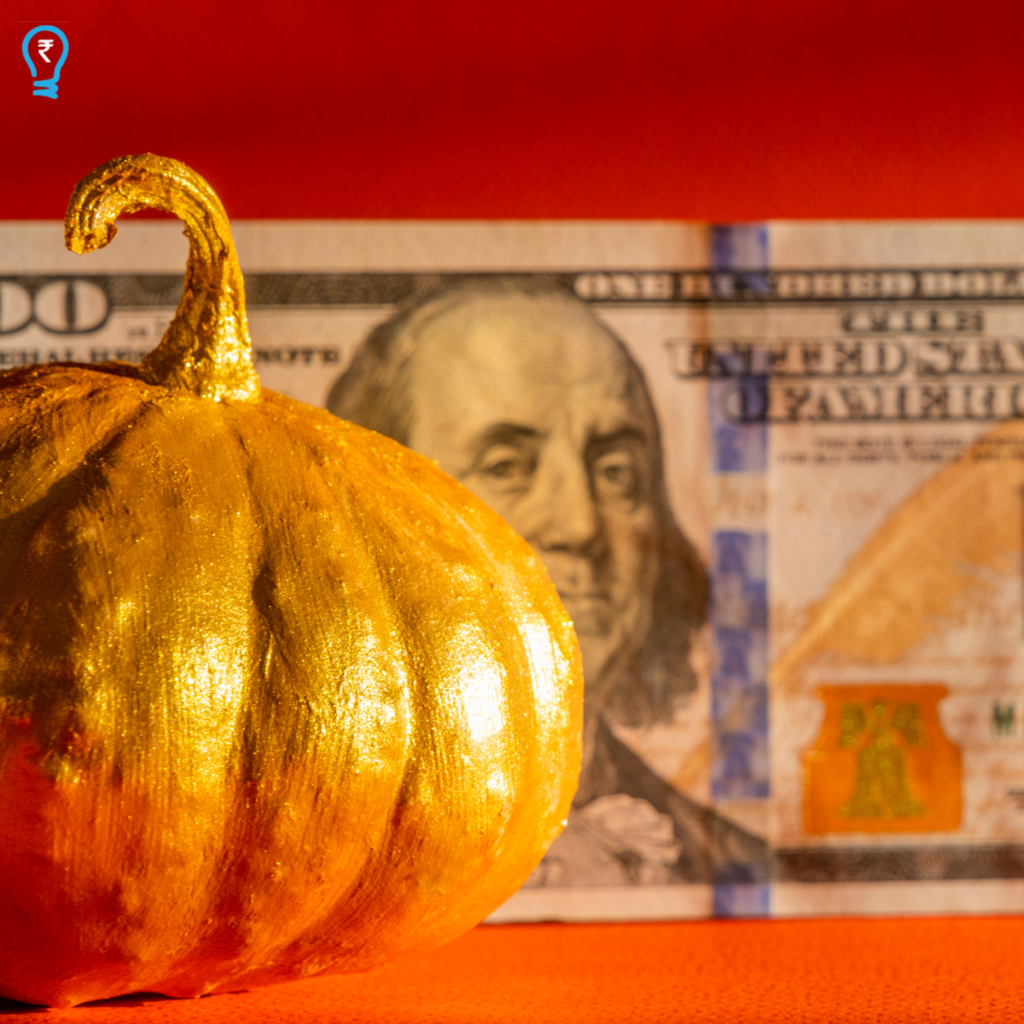Over the past year, gold prices have risen to an all-time high, nearing ₹77,000 as of October 2024. This sharp increase, although induced by the current geopolitical situation, is likely to have severe consequences for the global economy. Under these circumstances, it becomes imperative to analyze the reasons behind this trend in order to predict its potential impact on the world at large.
Introduction: Why Is Gold Relevant?
The status of gold as a symbol of perfection has been gradually ingrained in society’s mind over thousands of years. Civilizations of the past have associated gold with qualities like divinity and enlightenment, and today’s society still treats it as a symbol of excellence, whether by competing for a gold medal or following the “Golden Rule.” Yet, many people argue that gold has no intrinsic value. They believe that the metal is a relic of the past and is valuable only because people deem it to be so. It is thus imperative to ask: Why just gold? What makes this particular metal so unique? To answer this question, we must travel back in time to the age when people began to grow tired of the barter system. Mankind needed to replace commodity-for-commodity exchange with a unified currency, which required minting coins. It was clear, first and foremost, that the choice would be limited to metals (since gaseous or liquid currencies are neither practical nor sustainable), and it was also essential to ensure that the metal used to mint these coins wasn’t susceptible to corrosion (thereby eliminating options like iron, lead, and aluminum). These two considerations effectively limited the choice to a group of metals known as noble metals, including platinum, palladium, gold, and silver. However, most of these noble metals are too scarce for widespread adoption, further narrowing the options to just gold and silver, the two metals that were widely adopted and used as measures of value. Among the two, gold holds a slight edge over silver, as it is more scarce than the latter while also being available widely enough to be used as currency. Thus, gold emerged as the universal measure of value and has been used as a standard to quantify objects since time immemorial.

The Relationship Between Gold & USD
The dollar has been the most significant currency in the world since the end of World War II. It is the most commonly held reserve currency and the most widely used currency for international trade and other transactions globally.
The reasons for this are multifold:
- The US economy was the strongest and most stable in the immediate aftermath of the war. It had accumulated significant gold reserves, which were crucial for backing its currency. At the time, it held about 75% of the world’s gold supply, making the dollar a stable and reliable currency for international transactions.
- The Bretton Woods Conference brought together representatives from 44 Allied nations to create a new international monetary system. The agreement established fixed exchange rates between currencies and pegged them to the U.S. dollar, which was convertible to gold at a rate of $35 per ounce. This system aimed to promote stability in international trade and prevent the competitive devaluations that had characterized the interwar period.
- The new monetary system facilitated international trade by providing a common currency for transactions, reducing exchange rate risks for countries engaged in trade with one another. The dollar’s widespread acceptance also made it easier for countries to hold reserves in dollars rather than in gold or other currencies.
Despite this shift, the dollar still derives its legitimacy from the United States holding the most gold reserves. For all intents and purposes, gold remains the greatest indicator of a nation’s wealth. Thus, when the global economy—including the U.S.—suffers, people often turn once again to gold for a sense of stability. Consequently, gold and the U.S. dollar tend to move in opposite directions. When the value of the dollar increases, gold prices generally decrease. Given that, gold is priced in dollars; a stronger dollar makes gold more expensive for holders of other currencies, leading to decreased demand and lower prices. Conversely, when the dollar weakens, gold becomes cheaper for foreign investors, increasing demand and driving up its price. However, it would be simplistic to attribute the current meteoric rise solely to the weakening of the dollar; many factors are at play.

The Recent Hike In Prices:
The recent landscape of global finance has been significantly altered by two primary factors: the US Federal Reserve’s decision to cut interest rates for the first time since the Covid 19 pandemic and the geopolitical ramifications of the Russia-Ukraine war. Bond yields have dropped as a result of interest rate cuts, which has caused investors to look for more reliable assets. Although gold yields no interest, it provides a reliable store of value, leading to increase in demand and consequently driving up its price. In fact, as per a Morgan Stanley report, over the past 25 years, the price of gold has jumped by 10% for every 1% fall in the inflation-adjusted interest rates of the US 10-year government bond. Furthermore, the war has heightened apprehension among non NATO countries regarding the extent of US influence over the global economy. Following Russia’s invasion of Ukraine, Western nations collectively froze Russia’s foreign reserves, leading to it losing access to all its western bonds and assets. This has created a sense of distrust among other nations which have an attained relationship with the west. Having realized that they risk entering an economic crisis should their conflict with the west escalate, the central banks of these nations have begun spending more and more on acquiring Gold to safeguard their currency value. Another crucial factor that impacts prices, is the money supply to Gold Ratio. In recent times, there has been a drastic increase in the total amount of cash floating around in the economy, as a result of the expansionary monetary policies adopted by central banks across the globe. An increase in money supply, decreases the value of individual units of paper currency, which once again pushes people towards Gold, which is a finitely available resource
The Diwali Effect:
Traditionally, the first day of Diwali, known as Dhanteras is considered a time for purchasing gold as it symbolizes good fortune and prosperity. Many people buy gold jewelry, coins, or bars during this period, leading to a surge in demand. As the festival approaches, there is usually an increase in gold prices due to heightened buying activity. Over the past decade, gold has appreciated by an average of about 4% during this time. It is here that the aspect of ‘Shubh Muhurat’, or ‘auspicious time’ comes into play. Most people who purchase gold in and around this time try to align their purchases with the occasion of Dhanteras. As a result of this, there is typically a sharp increase in demand on the day itself followed by a marked decline in demand immediately afterward. This can be attributed to the fact that many individuals who had planned to buy gold during the festive season typically make their purchases on Dhanteras, thereby reducing the pool of potential buyers in the days and months that follow. As a result, there is a noticeable dip in both consumer activity and gold prices in the immediate aftermath of the festival. This year, the prices surged as high as Rs 78,577 per 10 grams marking an increase of over 30% from last year’s Rs 60,282. The immediate aftermath of Diwali witnessed a fall in prices to approximately Rs 78,610 per 10 grams. Analysts predict that there might be short-term corrections in the coming days, potentially nearing 5-7%. However given the temporary nature of the surge in demand, it is likely that the general trend of prices will continue to move upwards

Conclusion:
Generally speaking, gold prices are an indicator of the public’s confidence in the present global order. In times of chaos, both central banks and markets grow uneasy and often invest in gold as a hedge against the value fluctuations of paper currency. Most indicators suggest that gold prices are likely to remain elevated, as the factors driving gold’s rise—the weakening dollar, central bank buying, and global inflation—are unlikely to be resolved anytime soon. However, it remains to be seen whether prices will continue to rise further or stagnate due to a collective market realization. The U.S. Federal Reserve’s monetary policy plays a crucial role here. Recent expectations indicate a nearly 98% chance of a 25 basis point cut in the federal funds rate this November, which could further influence investor behavior toward gold. It is clear, however, that the natural forces of supply and demand alone are unlikely to resolve the issue in the short term. What is needed is some external driving force or shift in monetary policy. Only time will reveal how much longer the world will have to wait before it can once again afford this long-term favorite asset of humankind.

Animesh Sabat
Member
Deepseek: A journey from Hedge Funds to AI
Introduction: In this busy and bustling day to day life of ours managing our Finances…
Beyond Numbers: The Human Cost of Infosys’ Layoffs and the Global Normalization of Workforce Reduction
A Familiar Script: Infosys and the Corporate Playbook of Disposable Labor: On February 7, 2025,…
Understanding Tariffs and Their Impact on India
What Are Tariffs? Tariffs are taxes governments levy on foreign imports to make the goods more…
The Economics of Player Transfers in Football
Introduction: In the world of football player transfers are more than just transactions, they are…
Session 5
Session 5- Unraveling Equity Derivatives: Insights from the Fifth Development Session The Fifth Development Session…
An Attempt To Deteriorate The Creditworthiness of Indian Entities
Introduction: The growth story of India in almost every sector is not alien to the…








